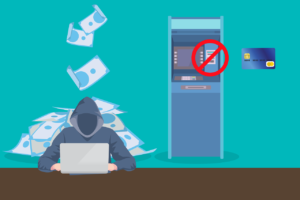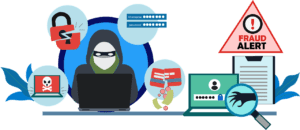Understanding Cyber Threats
Cyber basically refers to the meaning of being online and the activities being performed on a larger scale via the internet. These activities may face harm or damage to the credentials due to any detrimental entity. In other words, an attack involves damage to your system including its vulnerability making your system susceptible to viruses. Therefore, you should learn about some tricks to protect yourself from online threats.
Nowadays, cyber-threats are at their peak and increasing at a rapid rate and we should recognize them. Otherwise, market trust in business dealings especially would be at greater risk. All the work is being done digitally, so it needs a computer, servers, access points, and router to operate.
It’s obvious that good things come with a risk. Digital work with shortened time lapse also brings threats that take only a second to attack your systems.
Types of cyber-threats
Cyber threats are not just confined to a normal viral attack, it has several types for the diversity of system handling and work. Some common types of cyber-threats are:
-
Insider threats:
Insider threat is the risk that an insider will use their access to an organization or their familiarity with it to cause harm to it.

Malware:
Malware is computer software that can be installed without the user’s permission and carries out vile operations, such as stealing passwords or cash.
-
Spoofing:
When a person or software successfully assumes the identity of another and manipulate data, it is called a “spoofing attack” in order to obtain an unfair advantage.
-
Phishing:
Phishing involves getting someone to submit their personal information or login credentials after receiving it from a dubious-looking source
-
Ransomware:
Malware called ransomware is made to prevent a user or business from accessing files on a computer. By locking the documents and requesting ransom money in exchange for the key to decode them is the easiest way to deal with this.
Welcome Virus
As you click the malicious link, the virus will proliferate to your entire system and will act like a host.
But the question is:
How can you prevent yourself from online threats?
There are some basic steps that can protect you from cyber threats:
- Developing a plan for cybersecurity
- Carrying out a security risk analysis
- Putting security awareness training into practice
- Putting Next-Generation firewalls into use (NGFW)
- Make multi-factor authentication available
- Employing an online CISO Service
- Putting in place endpoint detection and response (EDR)
Remember, the above tricks are only a speck to treat with malicious threats. Because the era of advancement is just commencing and it will soon spread like a fire in the forest, we need an expert analysis on how to deal with online threats.
Advanced Security Programs
For advanced systems, we must adopt advanced settings and protocols that include a data security team, computer analytics, problem solvers, ultra-modern techniques, and advanced level testing at the organizational level.
Steps to prevent advanced cyber attacks
- Limit the lateral movement of the attacker by NETWORK SEGMENTATION
- Threat identification and ongoing observation
- Regular Scanning
- Patch management to ensure the up-to-date version
- Apply advanced security policies
- Use secure coding techniques
- Encrypt sensitive data
- Execute a Cyber security incident response plan (CIRP)
- Monitor third-party vendors
- Alter operating system settings
- Disable unnecessary services
- Keep up with online risks
Cyberthreats and Cyberbullying in the Virtual Era
As we all know emerging years would create a world without barriers making the distances feel nothing but just a little hindrance that would certainly be eliminated in a very short span of time. The advancing era, escalating developments, and a surge of technological equipment would cause a high degree of cyber threats as well even if we talk about daily internet surfers using mobile phones. 
Mobile phones are giving rise to a new extent of cyber threats and cyberbullying. These includes a gigantic amount of harassment cases in Pakistan. Cyberbullying and threats mostly target female users through their social media handles including Twitter, Snapchat, Facebook, Instagram, and many more.
Steps to Enhance Your Cybersecurity
You must use these important tricks to protect yourself from online threats:
- Generate strong passwords
- Update your operating systems and web browsers regularly
- Use multi-factor authentication
- Install antivirus and anti-malware software to your systems
- Never share your passwords
- Beware of clicking on links from a suspicious source
- Do not share login credentials to avoid phishing attempts
- Secure data by keeping a backup
- Keep track of your accounts on a daily basis
- Create awareness about cyber-threats
- Always use encryption for your social accounts
- Never allow cookies from every website
All these measures are to be kept in mind if you want your data to be protected in the long run.
A Quick Review
Online work and business are growing at a fast rate these days. But many are linked with scams and threats, as in business you have to invest initially. After the investment, there are specific policies one must follow that buds evolving cyber-attacks on your sensitive information, especially banking credentials.
Therefore, all that’s needed is to be vigilant of whatever you do digitally. But by having a comprehensive and proactive approach to cyber-security, these threats can be prevented and you must not ignore the tricks to protect yourself from online threats.

